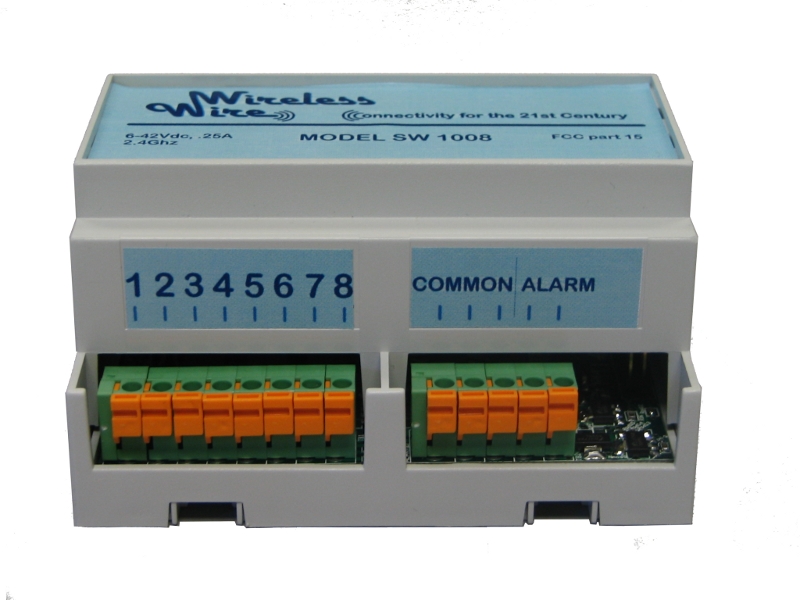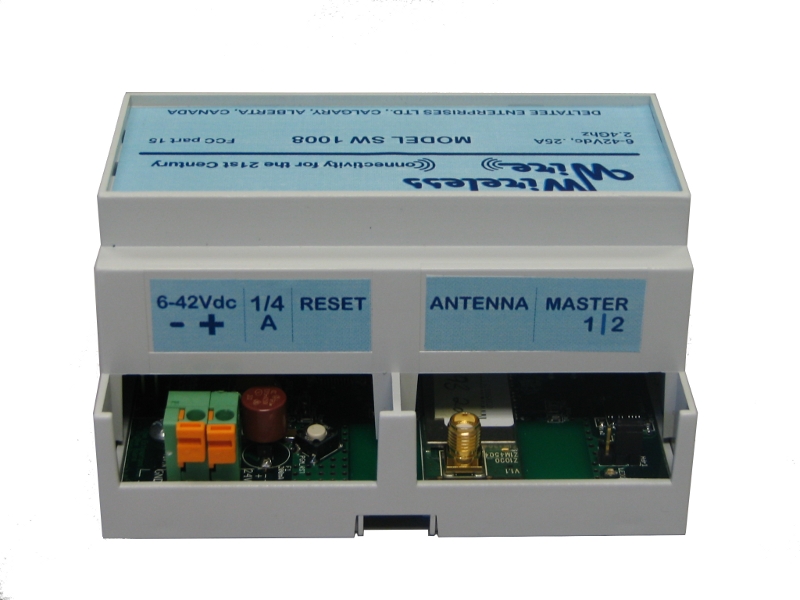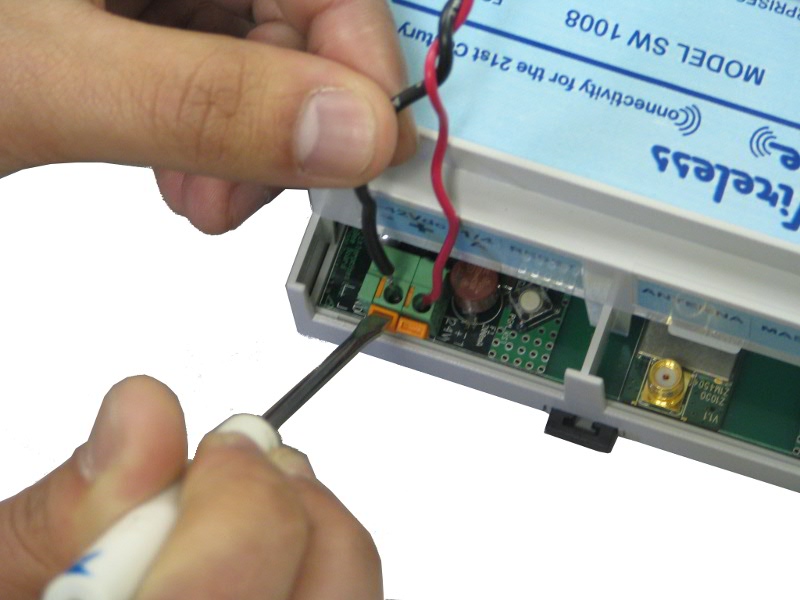Wireless Wire SW 1008
Cable wiring is expensive to install, and even more expensive to change. The Wireless Cable system can offer a good solution which is low cost, easy to install, and provides a robust interconnection method to guarantee the signal gets through. The Wireless Cable is a low-power system, based on the IEEE 802.15.4-2006, 2.4 GHz secure self healing mesh network commonly known as "ZigBee". The real advantages of mesh networks are that they improve data reliability and adaptability by providing multiple redundant paths in areas that are inherently obstructive to radio paths.
- The Wireless Cable does not require sophisticated planning and site mapping to achieve reliable communications. There is no need for specialized, expensive labor to complete the installation.
- Compared to the cost of equipment, labor and specialized knowledge that is required to install point-to-point copper wiring and conduit, Wireless Cable is much less expensive.
- The Wireless Cable is self-configuring, and does not require a network or radio specialist, just connect as a copper cable would be.
- The Wireless Cable is simple. The control system does not know that copper has been replaced with a Wireless Cable link, but the Wireless Cable network is inherently more reliable, more adaptable, and scalable.
- The Wireless Cable failure rate is very low.
- The Wireless Cable is adaptable. It has the ability to self-heal the network. For example, if the Wireless Cable at site B (intermediate between site A and D) was removed for some reason, a new path would automatically be used to route signals from A to B.
- The Wireless Cable is scalable. Up to 30 remote sites can be interconnected with up to 16 "wires".




